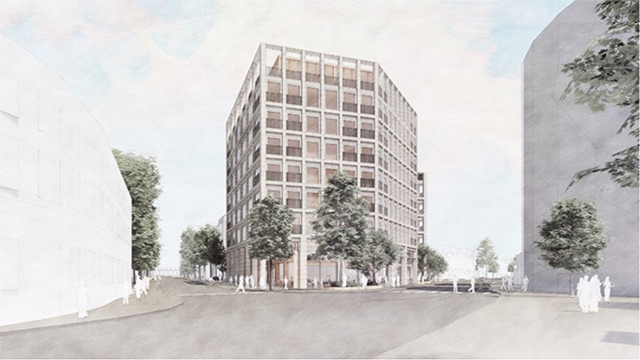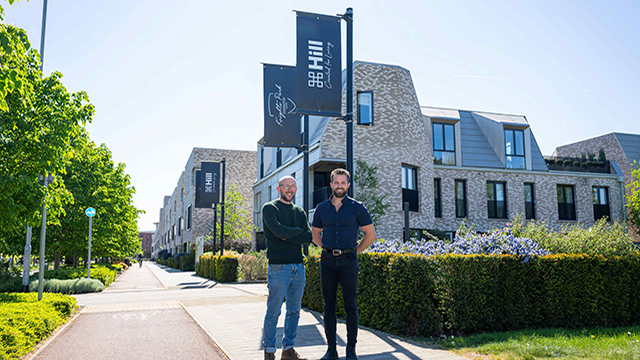Over the past few years, the importance of student housing as a property investment segment has increased. In the UK, investors such as Unite group and others are already very active and Germany has followed that trend.
Dutch pension fund PGGM recently invested in the University Partnership Programme (UPP) with a total enterprise value of €1.7bn.
UPP focuses on funding, developing and operating student accommodation and campus infrastructure schemes and also provides asset management services in the UK. The programme invested £1.4bn in the UK higher education sector and has plans to invest a further £1bn over the next two years. UPP has a portfolio of 28,000 rooms in operation or development and a built-out rent roll of £133m.
Switzerland-based Corestate expanded its activities into the German student housing market with the establishment of student housing developer Youniq in 2009. Youniq recorded results of €160.1m in the first quarter of 2013.
Bouwfonds launches student digs fund
Dutch real estate fund manager Bouwfonds REIM has also recently entered the student housing market by launching the European Student Housing fund. The fund has an investment target of €200m to €300m. According to Bouwfonds REIM’s study, Investing in European Student Housing, the European student market is large, provides attractive yields and has a stable demand outlook. Furthermore it benefits from an anti-cyclical nature and has a favourable risk profile, says the report. Bouwfonds fund will focus its investments on the UK, France, Germany, Scandinavia and the Netherlands.
Now Haerzathe Investments has opened a fund for student housing in the Netherlands. This closed-end fund will invest primarily in student housing in Amsterdam.
Unlike the other markets in the Netherlands, student housing is only now evolving as an asset class for commercial investors.
“Student housing is still in its infancy but it is starting to become its own asset class in the Netherlands,” says investment director at Savills Netherlands, Jan de Quay.
Sebastian Zwart of Savills Netherlands Investment says: “The sector is evolving into an attractive investment opportunity offering a stable income stream and limited risk. Net yields in the region of 5.75% to 7% can be achieved.”
Nevertheless, the market has been quite active recently with many projects currently being developed or recently completed. One project in Amsterdam is the redevelopment of the former office building GAZ which will be developed into student housing and residential apartments to be sold to private individuals. The building, which has been vacant for several years, dates from 1960 and has about 36,000 m2 of lettable space.
The project is being realised by Dutch developer AM in cooperation with the Dutch housing society Stadgenoot. In the North wing of the building 320 apartments intended for sale and rental use were developed and have already been sold while 2,000 m2 of commercial space is currently being marketed. The South wing includes the development of 300 apartments and around 1,750 m² of commercial space.
The projects meet the large demand for student housing in the Netherlands. The number of higher education students in the Netherlands has increased by 48% and in 2012; a total of 663,000 students were enrolled in either higher professional education or at a university, according to Savills’s Student Housing in the Netherlands report, which adds that the Dutch student population is expected to increase by another 15.7% to a total of 767,000 students in 2025.
This means that 50,000 to 60,000 student housing units need to be realised by 2025, according to Savills’ head of Netherlands research, Jeroen Jansen.
More recently student housing has become a solution for Netherland’s high office vacancy rates. A number of landlords have converted their empty office buildings into student housing.
Examples are the redevelopment of five former office buildings in Diemen into a student campus containing 936 student housing units in a scheme by developer Snippe BV. Construction of the project, known as Diemervijver, has already started. About 534 student housing units are expected to be completed in September 2013 and a further 402 units will be completed in early 2014.
Another example of office buildings being converted into student housing is the Rembrandtparkgebouw in west Amsterdam. The former office building was redeveloped into a hotel, a school for higher education and 128 student apartments. Dutch property firm Pronam carried out the redevelopment.
A development in west Amsterdam, The Student Hotel project, comprises a former office building that is being redeveloped as student housing. The Student Hotel is a student housing operator, initiated by City Living, a joint venture between US-based The Carlyle Group and Amsterdam’s Benelux Property Group. City Living is a student accommodation specialist with operations in the UK and Benelux.
Preconditions for conversion
However, this is not a solution for the whole of Netherland’s vacant office stock. De Quay points out that the property must be suitable for a conversion into student housing. Very important is the location of the building, which should not be too far from the city centre, said de Quay. Also, the process of conversion presents technical challenges.
Investment in Dutch student accommodation has recently come to investors’ attention because it offers a stable income stream and limited risk. Dutch pension funds have already entered the market and foreign investors mainly from the UK and Germany are currently observing the market, says Savills. The rising number of students is increasing demand which is already larger than supply and vacancy levels are low compared to other assets classes, says research by Savills. Also, student housing is countercyclical, since students tend to extend their stay at the university in times of economic downturn, says Savills.
Nevertheless, at the moment there are a few hurdles impeding investors looking to enter the market. According to Savills, strict regulations concerning rents and indexation make it difficult for investors to get started.
In the Netherlands rents for residential property, which includes student housing, are highly regulated and landlords are not allowed to raise the rent above a certain limit. This limits investors when optimising rents. Savills thinks it would be beneficial to partially liberalise the market and allow for a fully commercial operation of student housing next to the regulated segment. This would address undersupply on the student housing markets and allow students to choose from a variety of suppliers from budget to high-end. Quay believes that the market would balance itself out and if rents become too high, landlords would not be able to find tenants and the rents would fall again.
Social housing entities lag behind
At the moment, student accommodation is developed by social housing organisations and commercial developers. Due to the difficult economic situation, social housing organisations are not active developers at the moment, says Quay. Commercial student housing developments, on the other hand have increased owing to commercial investors’ rising appetite for the asset type. In 2012, new developments and redevelopments of empty office buildings increased the number of student dwelling spaces by 2,600. Several new developments are expected to be completed in 2013 and 2014.
However, developers face difficulties finding financing for new projects. A few projects are currently funded by housing associations and also a few Netherlands-based pension funds bought into student housing, says Quay. In order to make investments attractive for foreign investors, yields would have to increase.
“Developers are currently asking for yields that are still out of range for foreign investors,” says de Quay. Developers are currently asking for 5% net yields but de Quay suggests that net yields should be around 6.25% to 6.5% in order to make investments into student housing attractive to foreign investors. He adds that “prices for vacant buildings might have to come down”.
He believes that the financing difficulties for developing student housing could be solved if foreign investors would provide capital at commencement of a project when the vacant building is acquired.
Student housing in the Netherlands is on its way to becoming more important as an asset class and has started to attract the attention of institutional investors. However, the further development of the market will depend mainly on political decisions about rent regulation and the availability of financing for new developments and conversions.










